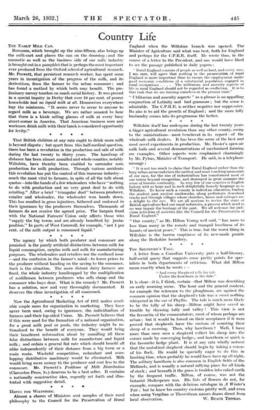TOE SHEPHERDS TALE.
A letter from a Canadian University puts a half-literary, half-social query that suggests sonic pretty points for spec- ialists in both departments of criticism. IVhat did Milton mean exactly when he wrote And every Shepherd tells his tale Under the hawthorn in the dale."
It is clear—it is, I think, certain—that Milton was describing an early morning scene. The hour and the general context, for example the reference to the ploughman, are against the comtnon opinion that the shepherd's talc was a sweet nothing whispered in the car of Phyllis. The talc is much more likely to be the tally of his sheep—Milton might have saved us trouble by rhyming tally and valley 1 This view is not the favourite of the commentators, most of whom perhaps are urban ; but it would be forced on their acceptance if it were proved that shepherds have the custom of counting their sheep of a morning. Then, why hawthorn Well, I have more than once seen a shepherd collect his sheep into the corner made by converging hedges, and hawthorn or quick is the favourite hedge plant. It is at any rate wholly natural that the matutinal shepherd should begin by taking a CUMIN of his flock. Ile would be specially eager to do this in lambing time, when probably he would have been up all night. The solitary hawthorn is also common in English fields of the Midlands, and is usually a natural rallying place for all kinds of stock ; and beneath it the grass is trodden into caked earth by the frequent traffic. Milton, of course, was not the botanist Shakespeare was. His lists of flowers do not, for example, compare with the delicious catalogue in A Winter's Tale; but he knew his country customs pretty well, and even when using Vergilian or Theocritean names draws direct from


































 Previous page
Previous page